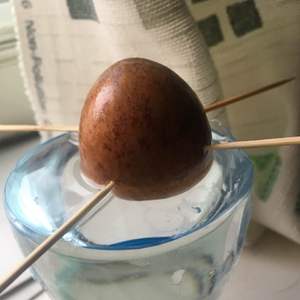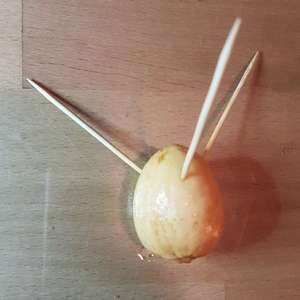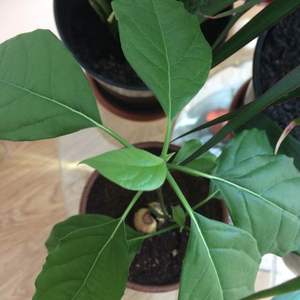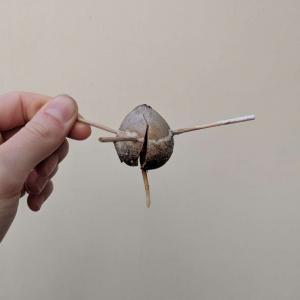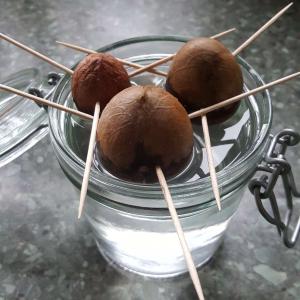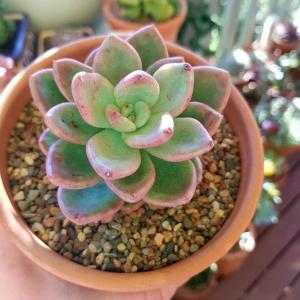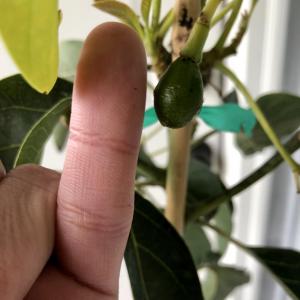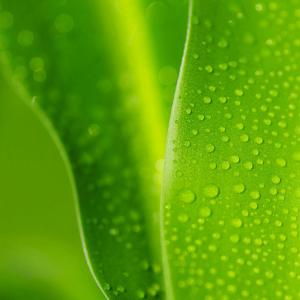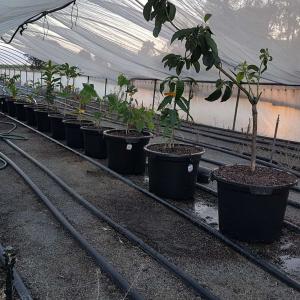文章
ritau
2020年06月11日

The avocado (Persea americana), a tree likely originating from south-central Mexico, is classified as a member of the flowering plant family Lauraceae. The fruit of the plant, also called an avocado (or avocado pear or alligator pear), is botanically a large berry containing a single large seed.
Avocados are commercially valuable and are cultivated in tropical and Mediterranean climates throughout the world. They have a green-skinned, fleshy body that may be pear-shaped, egg-shaped, or spherical. Commercially, they ripen after harvesting. Avocado trees are partially self-pollinating, and are often propagated through grafting to maintain predictable fruit quality and quantity. In 2017, Mexico produced 34% of the world supply of avocados.
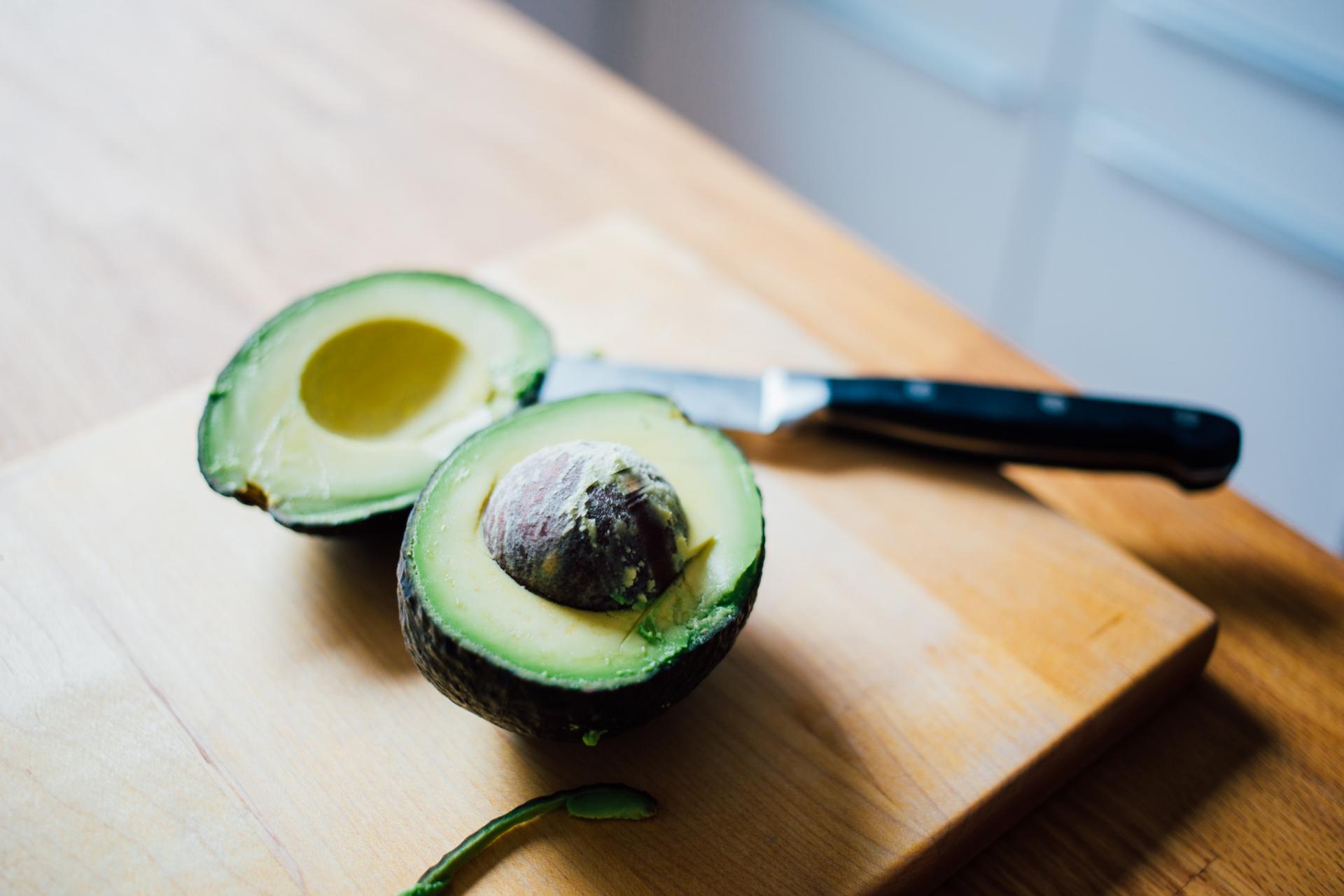
Persea americana, or the avocado, possibly originated in the Tehuacan Valley in the state of Puebla, Mexico, although fossil evidence suggests similar species were much more widespread millions of years ago. However, there is evidence for three possible separate domestications of the avocado, resulting in the currently recognized Mexican (aoacatl), Guatemalan (quilaoacatl), and West Indian (tlacacolaocatl) landraces. The Mexican and Guatemalan landraces originated in the highlands of those countries, while the West Indian landrace is a lowland variety that ranges from Guatemala, Costa Rica, Colombia, Ecuador to Peru, achieving a wide range through human agency before the arrival of the Europeans.The three separate landraces were most likely to have already intermingled in pre-Columbian America and were described in the Florentine Codex.
The earliest residents were living in temporary camps in an ancient wetland eating avocados, chilies, mollusks, sharks, birds, and sea lions. The oldest discovery of an avocado pit comes from Coxcatlan Cave, dating from around 9,000 to 10,000 years ago. Other caves in the Tehuacan Valley from around the same time period also show early evidence for the presence and consumption of avocado. There is evidence for avocado use at Norte Chico civilization sites in Peru by at least 3,200 years ago and at Caballo Muerto in Peru from around 3,800 to 4,500 years ago.
The native, undomesticated variety is known as a criollo, and is small, with dark black skin, and contains a large seed. It probably coevolved with extinct megafauna.The avocado tree also has a long history of cultivation in Central and South America, likely beginning as early as 5,000 BC. A water jar shaped like an avocado, dating to AD 900, was discovered in the pre-Incan city of Chan Chan.
The earliest known written account of the avocado in Europe is that of Martín Fernández de Enciso (circa 1470–1528) in 1519 in his book, Suma De Geographia Que Trata De Todas Las Partidas Y Provincias Del Mundo. The first detailed account that unequivocally describes the avocado was given by Gonzalo Fernández de Oviedo y Valdés in his work Sumario de la natural historia de las Indias in 1526.The first written record in English of the use of the word 'avocado' was by Hans Sloane, who coined the term, in a 1696 index of Jamaican plants. The plant was introduced to Spain in 1601, Indonesia around 1750, Mauritius in 1780, Brazil in 1809, the United States mainland in 1825, South Africa and Australia in the late 19th century, and Israel in 1908. In the United States, the avocado was introduced to Florida and Hawaii in 1833 and in California in 1856.
Before 1915, the avocado was commonly referred to in California as ahuacate and in Florida as alligator pear. In 1915, the California Avocado Association introduced the then-innovative term avocado to refer to the plant.

The word "avocado" comes from the Spanish aguacate, which in turn comes from the Nahuatl word āhuacatl [aːˈwakat͡ɬ], which goes back to the proto-Aztecan *pa:wa which also meant "avocado". Sometimes the Nahuatl word was used with the meaning "testicle", probably because of the likeness between the fruit and the body part.
The modern English name comes from an English rendering of the Spanish aguacate as avogato. The earliest known written use in English is attested from 1697 as "avogato pear", a term which was later corrupted as "alligator pear". Because the word avogato sounded like "advocate", several languages reinterpreted it to have that meaning. French uses avocat, which also means lawyer, and "advocate" — forms of the word appear in several Germanic languages, such as the (now obsolete) German Advogato-Birne, the old Danish advokat-pære (today it is called avocado) and the Dutch advocaatpeer.
In other Central American and Caribbean Spanish-speaking countries, it is known by the Mexican name, while South American Spanish-speaking countries use a Quechua-derived word, palta. In Portuguese, it is abacate. The fruit is sometimes called an avocado pear or alligator pear (due to its shape and the rough green skin of some cultivars). The Nahuatl āhuacatl can be compounded with other words, as in ahuacamolli, meaning avocado soup or sauce, from which the Spanish word guacamole derives.
In the United Kingdom, the term avocado pear is still sometimes misused as applied when avocados first became commonly available in the 1960s.
Originating as a diminutive in Australian English, a clipped form, avo, has since become a common colloquialism in South Africa and the United Kingdom.It is known as "butter fruit" in parts of India.
*Nutrients and fat composition*
A typical serving of avocado (100 g) is moderate to rich in several B vitamins and vitamin K, with good content of vitamin C, vitamin E and potassium (right table, USDA nutrient data). Avocados also contain phytosterols and carotenoids, such as lutein and zeaxanthin.
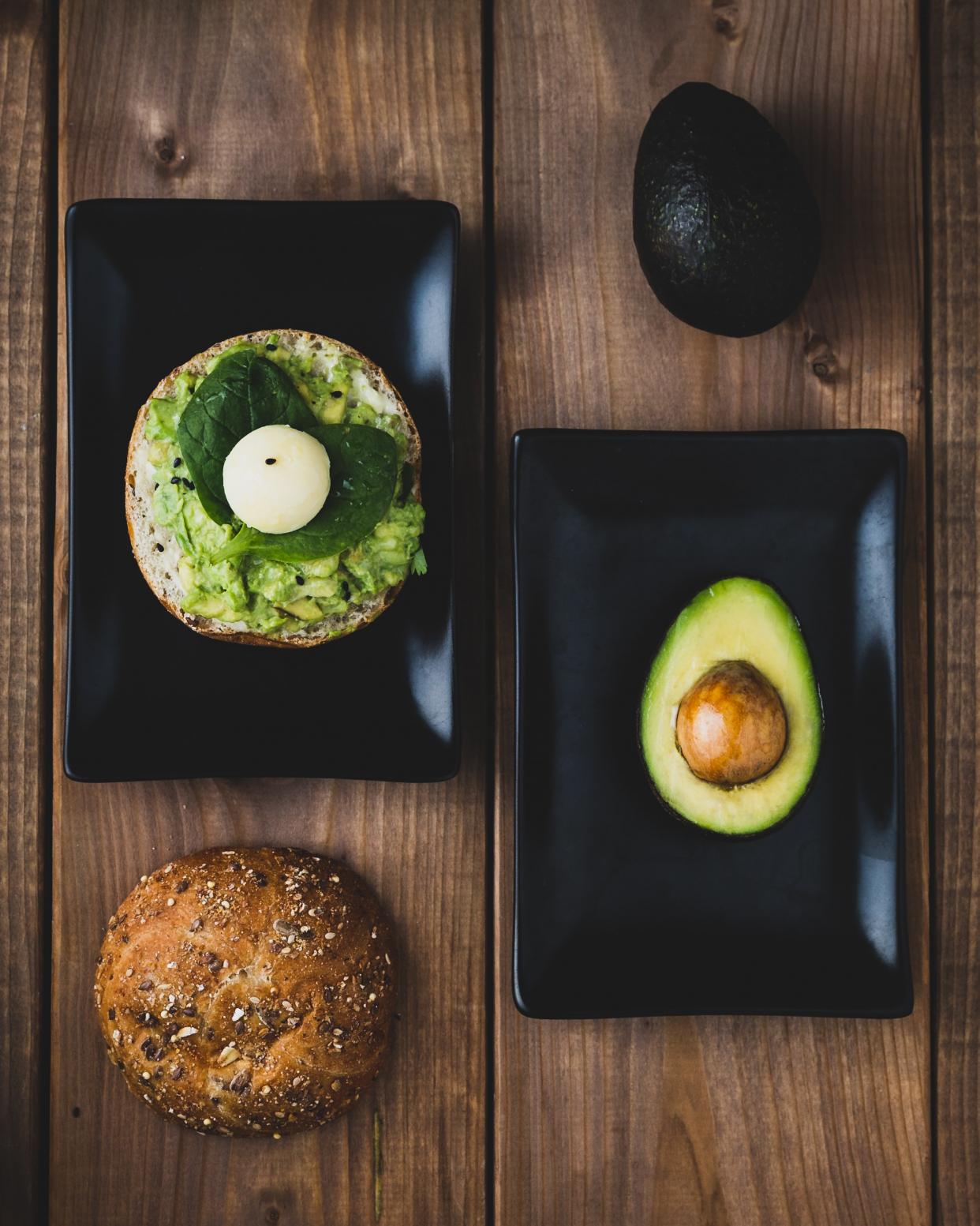
Avocados have diverse fats. For a typical avocado:
-About 75% of an avocado's energy comes from fat, most of which (67% of total fat) is monounsaturated fat as oleic acid.
-Other predominant fats include palmitic acid and linoleic acid.
-The saturated fat content amounts to 14% of the total fat.
-Typical total fat composition is roughly: 1% ω-3, 14% ω-6, 71% ω-9 (65% oleic and 6% palmitoleic), and 14% saturated fat (palmitic acid).
Although costly to produce, nutrient-rich avocado oil has diverse uses for salads or cooking and in cosmetics and soap products. Avocados are also a good source of vitamins B, E, and C, copper and fiber; their potassium content is higher than bananas.
Avocados are commercially valuable and are cultivated in tropical and Mediterranean climates throughout the world. They have a green-skinned, fleshy body that may be pear-shaped, egg-shaped, or spherical. Commercially, they ripen after harvesting. Avocado trees are partially self-pollinating, and are often propagated through grafting to maintain predictable fruit quality and quantity. In 2017, Mexico produced 34% of the world supply of avocados.

Persea americana, or the avocado, possibly originated in the Tehuacan Valley in the state of Puebla, Mexico, although fossil evidence suggests similar species were much more widespread millions of years ago. However, there is evidence for three possible separate domestications of the avocado, resulting in the currently recognized Mexican (aoacatl), Guatemalan (quilaoacatl), and West Indian (tlacacolaocatl) landraces. The Mexican and Guatemalan landraces originated in the highlands of those countries, while the West Indian landrace is a lowland variety that ranges from Guatemala, Costa Rica, Colombia, Ecuador to Peru, achieving a wide range through human agency before the arrival of the Europeans.The three separate landraces were most likely to have already intermingled in pre-Columbian America and were described in the Florentine Codex.
The earliest residents were living in temporary camps in an ancient wetland eating avocados, chilies, mollusks, sharks, birds, and sea lions. The oldest discovery of an avocado pit comes from Coxcatlan Cave, dating from around 9,000 to 10,000 years ago. Other caves in the Tehuacan Valley from around the same time period also show early evidence for the presence and consumption of avocado. There is evidence for avocado use at Norte Chico civilization sites in Peru by at least 3,200 years ago and at Caballo Muerto in Peru from around 3,800 to 4,500 years ago.
The native, undomesticated variety is known as a criollo, and is small, with dark black skin, and contains a large seed. It probably coevolved with extinct megafauna.The avocado tree also has a long history of cultivation in Central and South America, likely beginning as early as 5,000 BC. A water jar shaped like an avocado, dating to AD 900, was discovered in the pre-Incan city of Chan Chan.
The earliest known written account of the avocado in Europe is that of Martín Fernández de Enciso (circa 1470–1528) in 1519 in his book, Suma De Geographia Que Trata De Todas Las Partidas Y Provincias Del Mundo. The first detailed account that unequivocally describes the avocado was given by Gonzalo Fernández de Oviedo y Valdés in his work Sumario de la natural historia de las Indias in 1526.The first written record in English of the use of the word 'avocado' was by Hans Sloane, who coined the term, in a 1696 index of Jamaican plants. The plant was introduced to Spain in 1601, Indonesia around 1750, Mauritius in 1780, Brazil in 1809, the United States mainland in 1825, South Africa and Australia in the late 19th century, and Israel in 1908. In the United States, the avocado was introduced to Florida and Hawaii in 1833 and in California in 1856.
Before 1915, the avocado was commonly referred to in California as ahuacate and in Florida as alligator pear. In 1915, the California Avocado Association introduced the then-innovative term avocado to refer to the plant.

The word "avocado" comes from the Spanish aguacate, which in turn comes from the Nahuatl word āhuacatl [aːˈwakat͡ɬ], which goes back to the proto-Aztecan *pa:wa which also meant "avocado". Sometimes the Nahuatl word was used with the meaning "testicle", probably because of the likeness between the fruit and the body part.
The modern English name comes from an English rendering of the Spanish aguacate as avogato. The earliest known written use in English is attested from 1697 as "avogato pear", a term which was later corrupted as "alligator pear". Because the word avogato sounded like "advocate", several languages reinterpreted it to have that meaning. French uses avocat, which also means lawyer, and "advocate" — forms of the word appear in several Germanic languages, such as the (now obsolete) German Advogato-Birne, the old Danish advokat-pære (today it is called avocado) and the Dutch advocaatpeer.
In other Central American and Caribbean Spanish-speaking countries, it is known by the Mexican name, while South American Spanish-speaking countries use a Quechua-derived word, palta. In Portuguese, it is abacate. The fruit is sometimes called an avocado pear or alligator pear (due to its shape and the rough green skin of some cultivars). The Nahuatl āhuacatl can be compounded with other words, as in ahuacamolli, meaning avocado soup or sauce, from which the Spanish word guacamole derives.
In the United Kingdom, the term avocado pear is still sometimes misused as applied when avocados first became commonly available in the 1960s.
Originating as a diminutive in Australian English, a clipped form, avo, has since become a common colloquialism in South Africa and the United Kingdom.It is known as "butter fruit" in parts of India.
*Nutrients and fat composition*
A typical serving of avocado (100 g) is moderate to rich in several B vitamins and vitamin K, with good content of vitamin C, vitamin E and potassium (right table, USDA nutrient data). Avocados also contain phytosterols and carotenoids, such as lutein and zeaxanthin.

Avocados have diverse fats. For a typical avocado:
-About 75% of an avocado's energy comes from fat, most of which (67% of total fat) is monounsaturated fat as oleic acid.
-Other predominant fats include palmitic acid and linoleic acid.
-The saturated fat content amounts to 14% of the total fat.
-Typical total fat composition is roughly: 1% ω-3, 14% ω-6, 71% ω-9 (65% oleic and 6% palmitoleic), and 14% saturated fat (palmitic acid).
Although costly to produce, nutrient-rich avocado oil has diverse uses for salads or cooking and in cosmetics and soap products. Avocados are also a good source of vitamins B, E, and C, copper and fiber; their potassium content is higher than bananas.
0
0
文章
Miss Chen
2018年07月12日

Avocados originated in Mexico and Central America. The first records of avocados were discovered in Aztec writings, and avocado seeds were discovered buried inside Aztec cities along with other rubble. (The modern name "avocado" actually comes from the Aztec word "ahuacati," meaning testicles, which described how the avocado fruit looked hanging on the tree.) Avocados are now grown in warm and tropical climates around the world.
Preferred Climate
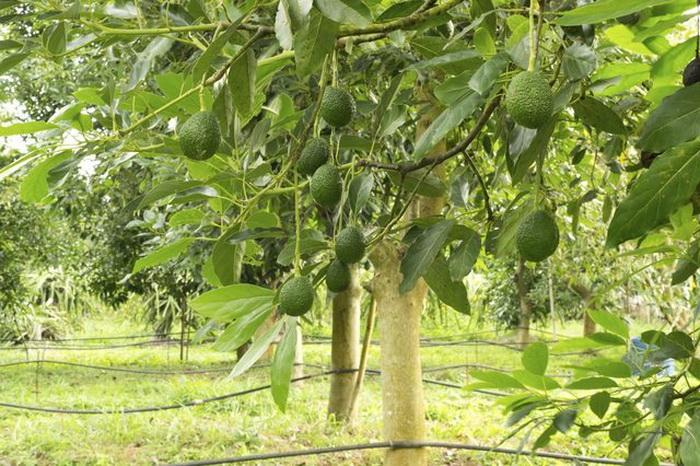
The preferred climate and zone for avocados is a climate with warm temperatures year-round. The tree is a tropical plant and does not like frost or temperatures under 50 degrees Fahrenheit. Avocado trees prefer high humidity of 60 to 80 percent. They can also grow in dryer climates (with no less than 40 percent humidity), but more problems may occur with the fruit or tree. The tree needs a high level of moisture and plenty of nutrients in the soil.
Mexico, Central and South America

Mexico, Central America, and some regions of South America have the frost-free climate, high water quality and rich soil necessary to keep avocados healthy. About half of all avocados sold in the United States come from Mexico, with Indonesia and the USA growing an additional third. The rest of Central America and South America make the rest of the percentage of avocados grown for U.S. import.
United States

It is possible to grow avocados in the United States in certain conditions. The best growing zones for avocado trees are U.S. hardiness zones 9 to 11. These zones are frost-free and have relatively even climates. All areas in these zones may not be suitable, however, because avocado trees need moisture and rich soil. Many of the warmer zones in the United States are too dry for avocado growing.
Australia
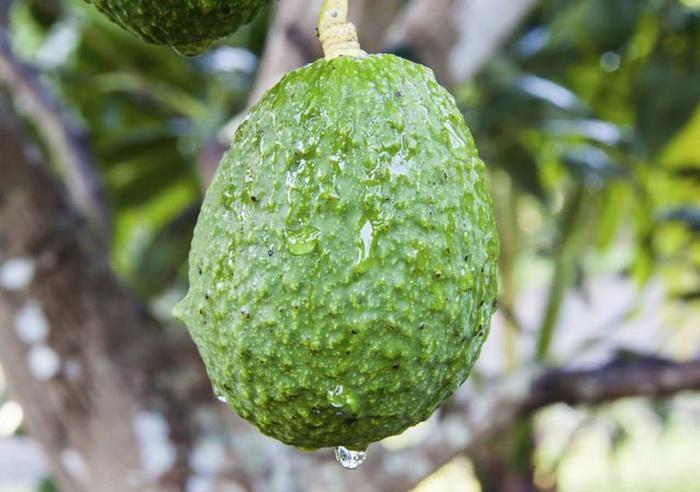
Australia has a large avocado-growing industry, with over 70 varieties grown all over the country. Avocado trees were first introduced to Australia in 1840. The seeds were planted in the royal garden, and it was determined that Australia was an ideal growing climate for avocados. As of 2010, Australia does not export its avocados to any other country, although a plan to export avocados to New Zealand and Asia is in development.
Growing Latitudes
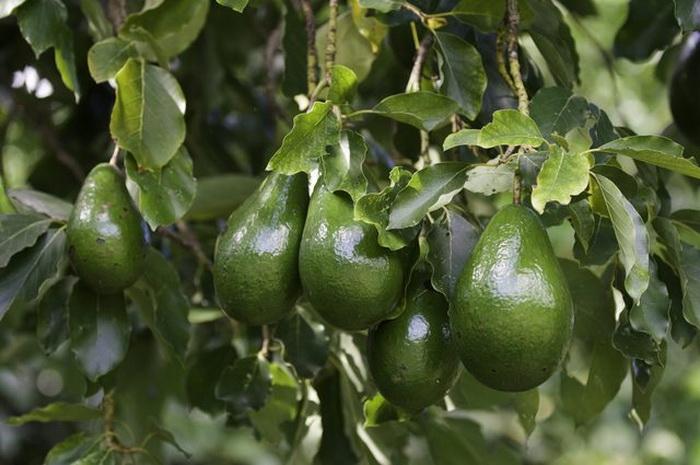
Latitudes at the 0 degree latitudinal mark (right around the equator) grow the healthiest avocados. However, avocado trees can grow between the latitudes of 30 degrees north to 35 degrees south—as far north as Maryland and as far south as South Africa and Australia.
Preferred Climate

The preferred climate and zone for avocados is a climate with warm temperatures year-round. The tree is a tropical plant and does not like frost or temperatures under 50 degrees Fahrenheit. Avocado trees prefer high humidity of 60 to 80 percent. They can also grow in dryer climates (with no less than 40 percent humidity), but more problems may occur with the fruit or tree. The tree needs a high level of moisture and plenty of nutrients in the soil.
Mexico, Central and South America

Mexico, Central America, and some regions of South America have the frost-free climate, high water quality and rich soil necessary to keep avocados healthy. About half of all avocados sold in the United States come from Mexico, with Indonesia and the USA growing an additional third. The rest of Central America and South America make the rest of the percentage of avocados grown for U.S. import.
United States

It is possible to grow avocados in the United States in certain conditions. The best growing zones for avocado trees are U.S. hardiness zones 9 to 11. These zones are frost-free and have relatively even climates. All areas in these zones may not be suitable, however, because avocado trees need moisture and rich soil. Many of the warmer zones in the United States are too dry for avocado growing.
Australia

Australia has a large avocado-growing industry, with over 70 varieties grown all over the country. Avocado trees were first introduced to Australia in 1840. The seeds were planted in the royal garden, and it was determined that Australia was an ideal growing climate for avocados. As of 2010, Australia does not export its avocados to any other country, although a plan to export avocados to New Zealand and Asia is in development.
Growing Latitudes

Latitudes at the 0 degree latitudinal mark (right around the equator) grow the healthiest avocados. However, avocado trees can grow between the latitudes of 30 degrees north to 35 degrees south—as far north as Maryland and as far south as South Africa and Australia.
1
0
文章
Miss Chen
2018年04月29日

Avocados generally ripen within two to three days after you purchase them, but you can slow down the ripening process if you do not plan to use them soon. If you need to use the avocado sooner, you can speed up the ripening process so that the avocado feels soft and has a darker green appearance.

Step 1
Select avocados that are light green and firm. Store the avocados in the refrigerator in the produce drawer.
Step 2
Keep the avocados in the refrigerator for three to five days. The refrigerator helps to slow down the ripening.
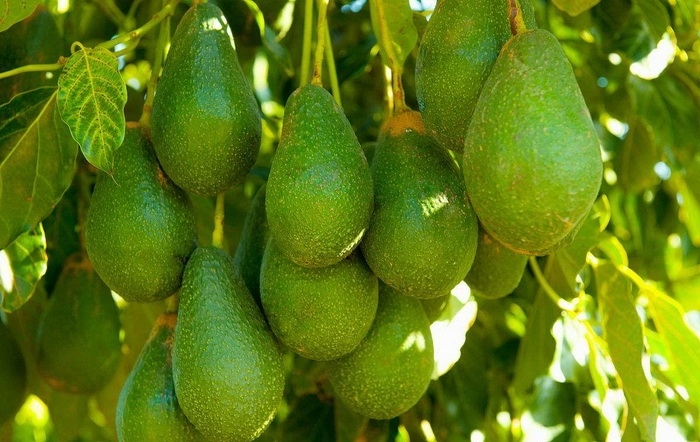
Step 3
Remove the avocados from the refrigerator two days before you plan to prepare them. Place them in a warm location so that they will ripen fully. If you need the avocados to ripen faster, store them in a brown paper bag with a ripe banana.

Step 1
Select avocados that are light green and firm. Store the avocados in the refrigerator in the produce drawer.
Step 2
Keep the avocados in the refrigerator for three to five days. The refrigerator helps to slow down the ripening.

Step 3
Remove the avocados from the refrigerator two days before you plan to prepare them. Place them in a warm location so that they will ripen fully. If you need the avocados to ripen faster, store them in a brown paper bag with a ripe banana.
0
0



